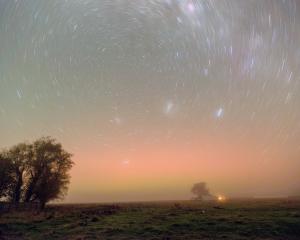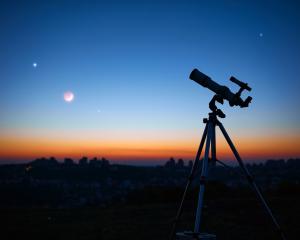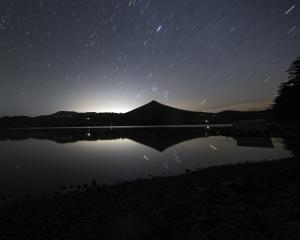No matter who you are or from where your whānau came, rest assured your ancestors were familiar with the rhythms of the sky.
Polynesian navigators used stars to steer waka across oceans. Before this, for millennia, Mesolithic astronomers observed the rising and setting of the sun and the moon at sites such as Stonehenge, in England, and New Grange, in Ireland.


Each year, in April and in August, the sun's annual motion around the sky means that, for a few days, sunset occurs directly behind the antenna atop Mount Cargill, in Dunedin, as seen from the deck of my home in Portobello.
While the occasion is always a cause for celebration in the Griffin household, this year was special. That is because last week, good weather meant I could photograph three successive sunsets. Thanks to a collaboration with my good friend Stephen Voss, we assembled a composite image that shows how much the sun gets higher in the sky each evening at this time of year using the antenna as a ruler!
The sun's position changes during the year because Earth's axial tilt causes it to orbit the sun in a way that varies the angle at which sunlight reaches different parts of the planet, leading to shifting sunset locations throughout the seasons.
You can also see another beautiful natural phenomenon in this composite image. The sun is rotating. On each night, it is possible to see sunspots on the surface of the sun.
A sunspot is a temporary, cooler, dark region on the surface of the sun caused by intense magnetic activity, which inhibits the flow of heat and appears darker compared to its surrounding areas.
If you look carefully, you can see how the various sunspot positions change each night as the sun rotates around its axis once every 27 days.











